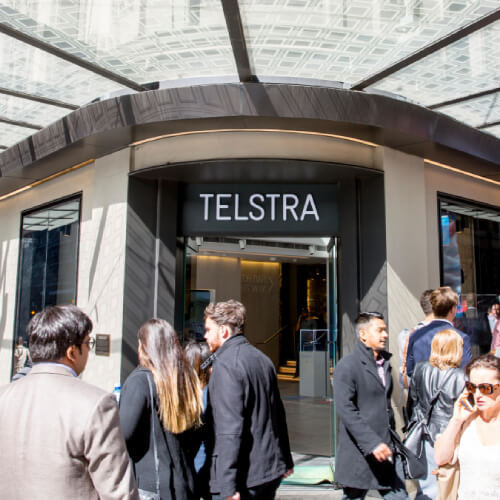Telstra CEO Andy Penn is adamant things are on the up at the Australian operator – whatever the numbers might appear to say.

Telstra's first half result is a tale of dueling numbers.
The actual numbers show a 34% slide in earnings, a 15% fall in EBITDA and revenue off by 9% as the company felt the impact of the loss of NBN payments and some NBN commercial work.
Investors took note of these, marking down the stock 4.2% in Thursday trading.
Figure 1:  Telstra's core mobile business accounted for 43% of total revenue in the half, led by the postpaid segment which added a net 84,000 customers.
Telstra's core mobile business accounted for 43% of total revenue in the half, led by the postpaid segment which added a net 84,000 customers.
(Source: sammy/Alamy Stock Photo)
But Telstra CEO Andy Penn and CFO Vicky Brady point to the story told by the underlying performance and the company's T22 efficiency program.
"Our T22 strategy is a clear success. We're now a vastly different company," Penn told analysts Thursday. Underlying EBITDA increased 5.1% to A$3.5 billion (US$2.5 billion) and underlying EPS was up 55%, he said. The company had also shaved A$644 million, or 8%, off operating costs.
Keeping mobile
On the growth side, Telstra's core mobile business, which accounted for 43% of total revenue in the half, is flying, led by the postpaid segment, which added a net 84,000 customers. Mobile service revenue was up 6% to A$4.69 billion, adding a healthy 8.6 points to EBITDA margin.
Telstra is also outrunning the competition in 5G, with 2.8 million services and a network twice as large as its nearest competitor, covering 78% of the population.
Demand for corporate mobile also drove improvement in the enterprise business unit, helping offset the declines in all the fixed-line products, which had been impacted by the rollout of NBN to business and the fall in voice.
Fixed-line consumer, wholesale and infrastructure also shrank, while the international business was flat.
Cut and come again
Penn said Telstra had achieved more than 80% of the targets in the T22 program, which is due to conclude this year.
This included a one-third fall in headcount, a huge reduction in the number of consumer plans – from 1,800 down to 20 – and the transition to digital customer service, which now accounted for three-quarters of all service responses.
Want to know more? Sign up to get our dedicated newsletters direct to
your inbox
The company had completed asset sales totaling nearly A$5 billion, including the part sale of its mobile towers business, and was two fifths of the way through a $1.4 billion share buy-back.
Acknowledging the onset of inflation, Penn said wage inflation was the "area of immediate concern" although so far there had been almost no impact. He said the greater flexibility of revamped pricing plans would help the company navigate through inflation.
Related posts:
— Robert Clark, contributing editor, special to Light Reading
Read more about:
AsiaAbout the Author(s)
You May Also Like











